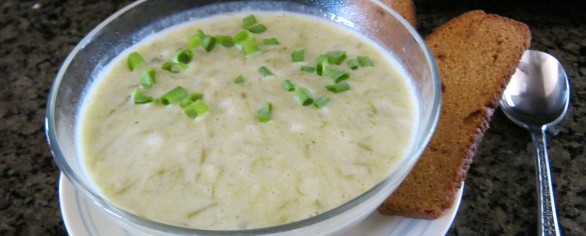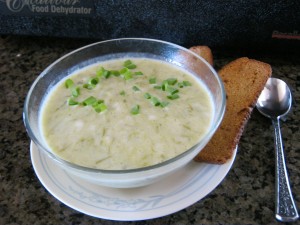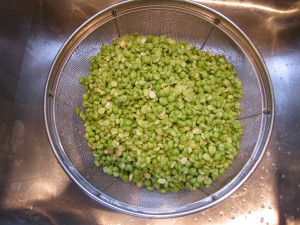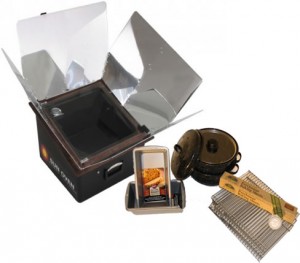I’ll be the first one (okay, no my FAMILY would be the first ones) to tell you that I used to HATE admitting I made mistakes! To the point of vehemently arguing that it was not a mistake at all (even if I really knew I’d made a major booboo). Years, maturity and wisdom finally worked into my thick skull (and God worked on the pride thing) and I actually now embrace (some of) the mistakes I make as abilities to grow and learn. The kitchen is one of those areas in which I actually love to make mistakes. As long as no one gets hurt.
Today we are doing the Miller House tradition of Fridge Purge. Which means – I am not going to buy more refrigerated groceries until we make some room. So meals get creative. I had about 8 stalks of cooked asparagus that no one was going to eat and would be headed for the trash by Saturday if I didn’t come to the rescue and FAST.
Also – several days ago I had a failed attempt at Sour Dough Bread. Don’t ask me why but that stuff alludes me every time. But no way was I tossing that whole loaf out just because it was squatty. So it became Melba Toast (in the Excalibur Dehydrator). All I did was slide the loaf very thin. Brushed both sides with a tad bit of olive oil and dehydrated until crispy.
So here is the super frugal lunch that came out of it my mistakes and left-overs:
Please don’t ask for a real specific recipe – because I measured nothing – just started tossing in the ingredients and out came a very creamy, delicious Cream of Asparagus Soup (with Melba Toast) for two!
Basically it was the 8 cooked spears in enough fat-free milk to cover, cooked on low until softened. Added about 1tsp of garlic grape-seed oil and seasoned with garlic salt, onion salt and savory to taste. Then let simmer just a few minutes.
With a stick blender, I whirred the mixture until most of the spears were ground up nicely. I then took 1/4 cup(ish) of cold milk and mixed about 2tsp of Arrow Root Powder into it – poured that mixture into the hot soup and stirred until thickened.
Put it in the bowl, topped with fresh chives and two home-made Melba-Toast by mistake slices for dipping and Tah-Dah! I took that picture to share lunch with you! (o: The other serving went to my particularly picky daughter – who actually liked it!
It actually tasted like it had a cheese base but it didn’t. For those who are dairy free – we you could use non-flavored or sweetened rice milk, almond milk or coconut milk.
For more photos of this visit our Millers Grain House Facebook Page – and “LIKE” the page to see more!
I hope you don’t throw out your mistakes or you tiny little left-overs *until they grow stuff on them or smell bad* – but that you use your imagination to embrace your mistakes and make something surprisingly pleasant out of them!
Best Blessings!
Donna
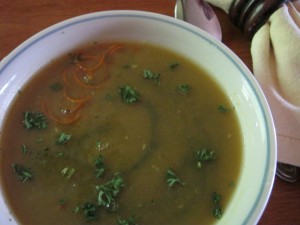 Typically a cold weather food, Split Pea Soup is a hearty meal that can be made entirely from foods that are stored for long term. Split peas last for a year or more in the pantry. Dehydrated carrots, onions and spices are also long term food storage items. If you can your own veggie or chicken broth, or purchase granules or bullion cubes then you’re set. Nothing has to be “in season” to make this filling soup.
Typically a cold weather food, Split Pea Soup is a hearty meal that can be made entirely from foods that are stored for long term. Split peas last for a year or more in the pantry. Dehydrated carrots, onions and spices are also long term food storage items. If you can your own veggie or chicken broth, or purchase granules or bullion cubes then you’re set. Nothing has to be “in season” to make this filling soup.
Here is the recipe and the steps.
Ingredients:
- 1/2 Cup shredded or diced dehydrated Carrots
- 1/4 Cup diced dehydrated Celery
- 1/4 Cup diced dehydrated Onions
- 1/2 Cup dehydrated Potato Cubes(optional)
- 2 Cups Split Green Peas
- 1 TBS Olive Oil
- 1 TBS Garlic Salt
- 1/8-1/4 tsp Cayenne
- 1/4 tsp Cumin
- 2 Quarts of Soup Stock (veggie or chicken or water/bullion equivalent)
First – soak 2 Cups of Organic Split Green Peas over night
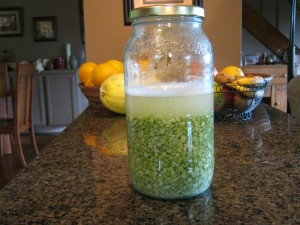 Don’t worry. They will likely look a little ‘frothy’ in the morning, but this is normal.
Don’t worry. They will likely look a little ‘frothy’ in the morning, but this is normal.
Just be sure before you go to sleep that you have covered the Split Peas with more than double their height in water. For example, if the peas are about 4 inches in depth, put 8 inches of water ABOVE THE TOP. Twelve inches all together. Because the peas will soak up a LOT of liquid over night making them easier to cook to smooth the next day.
After soaked, drain them before moving on with the rest of the recipe.
Mean while, back at the soup pot: Add about 1 Cup of the liquid to the base of the soup pot, put in all of your dehydrated veggies and let soak for a little while (approx 30 minutes).
Now add remaining liquid/broth, Drained Split Peas and spices. Cook on low heat for 2-4 hours. Stirring occasionally.
Either use a stick blender and put in the pot whirring until creamy or transfer by one cup at a time to a blender to blend most of the soup to creamy. For a chunkier soup, blend only half of the soup and leave the rest as is. Combine. For a smoother soup, blend it all. Serve hot.
Serve with freshly baked bread for a real treat.
This can even be pre-made with the dry ingredients in a cute little gift jar. Simply put the Split peas as the base and a small decorative bag full of the other dehydrated foods combined with the herbs as a topper inside the jar.
EnJOY!
Home 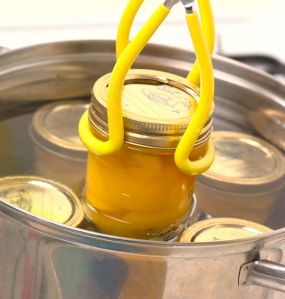 Canning has been around for far longer than our store-bought canned products of today. It is an old skill that is making a come back during these tougher than normal economic times. And why not? Buying fresh foods and learning how to make them last long into the next few seasons is often the most economical way to eat without attempting to live off of preservative laden boxed mixes.
Canning has been around for far longer than our store-bought canned products of today. It is an old skill that is making a come back during these tougher than normal economic times. And why not? Buying fresh foods and learning how to make them last long into the next few seasons is often the most economical way to eat without attempting to live off of preservative laden boxed mixes.
The history of canning can be traced back as far as Napoleon Bonaparte in the 18th century. He experimented for over 15 years and finally realized that if food is sufficiently heated and sealed in an airtight container, it would not go bad. Wine was among his very first commodities to attempt to preserve in this manner. I mean, priorities are priorities, right?
Although this skill may seem a bit old fashioned it is gaining new ground as grocery prices rise. Men and Women from their 20’s to their 60’s are learning this fine art of food preservation. It is as safe as it is ‘green’ (earth friendly). The cans are reusable glass and do not leach BPA into the food like the white lining of the commercial cans do. Even the lids don’t have to be tossed if you purchase the Tattler Lids (also BPA free). This is much better on our environment and our bodies.
The difference between water bath canning and pressure canning is easily determined by the acidity of the food. There are several good (and reasonably priced) books to help you know which method to use and how long to process the food. There are also tools of the canning trade that you can get for less than you may think, making the home canning process an old skill that will help you stretch your food bill for seasons to come.
With a little practice, you can easily both pressure can or water bath can almost every single food you may need. The food then stores for years without the aid of electricity.
If I can can – then you can can – we can all can!
Blessings and enJOY the journey!
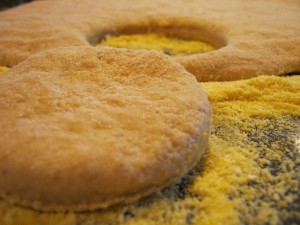 One of the biggest joys of freshly milled whole wheat at home is experimenting and finding out just what can be made. Having the whole grain on hand, milling it and using it in a variety of ways just opens the doors wide for budget stretching and nutrition!
One of the biggest joys of freshly milled whole wheat at home is experimenting and finding out just what can be made. Having the whole grain on hand, milling it and using it in a variety of ways just opens the doors wide for budget stretching and nutrition!
I used to think that English Muffins were one of the most difficult things to make. I mean, look at them! They are small discs of toasty goodness with the pull apart texture that makes them toast better than any slice of bread. Not to mention, we have always made Egg-Mc-Miller-Muffins for special occasions and I was afraid I’d mess things up by trying to make a Whole Wheat English Muffin. Boy, was I glad to be WRONG!
The May 31st Newsletter will have the full recipe and steps for making your own whole wheat English Muffins. Trust me, if I could do it – you can do it! So be sure you’re signed up for the Newsletter. Also, we’ll be 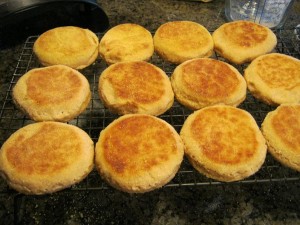 having a live video class on this – so you can see the techniques and ask questions! We’ll notify you of that class in the newsletter too!
having a live video class on this – so you can see the techniques and ask questions! We’ll notify you of that class in the newsletter too!
I’ll leave you with my favorite picture from my adventures in Whole Wheat English Muffins!
EnJOY playing with your food! You may never know what you can do until you try!
Home-made Whole Wheat (freshly milled!) Pizza Crust can be made easily ahead of time to make even the most hectic evening meals both fast and healthy. With variety and choices of toppings it can be a great family pleaser! I mean, who doesn’t like to choose their own toppings on pizza, right?
From fresh herbs to your own simply made tomato sauce (ground tomatoes) there are endless possibilities to toss on top of this crust and have dinner in a flash. The secret is making several of these healthy crusts ahead of time and freezing them!
Here’s the simple way to do it.
First use freshly milled whole wheat in your favorite recipe. You can see mine on our VIDEO ARCHIVES.
Second, buy the large turkey roasting bags at the grocer.
Third, when making these only par-bake them at 350 for between 8-10 minutes until lightly cooked.
Then cool completely, bag and put in the freezer. Stack them inside the turkey roasting bag, twist tie and freeze! Ready to be used when you’re short on time, but don’t want to short change your family on healthy food!
Then when you have only 15 minutes to have dinner on the table – pull one out, decorate as you like and bake for about 10 minutes at 400 degrees. Within less time than it takes to drive to the take-out pizza place you’ve got a far healthier and budget friendly dinner ready to go!
By using freshly milled whole wheat – you also enjoy the flavor of the pizza without the over powering taste of the bagged whole wheat flour ruining the sauce, cheese and toppings! So if you’ve not thought of a mill you’d like yet…please view our GRAIN MILL COMPARISON CHART to get started!
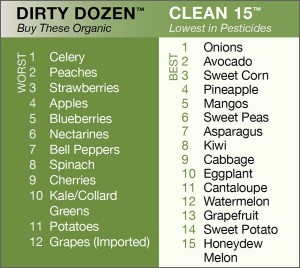 If there were one budget benefit to the rising food prices of our current economic climate, it would be that the prices of ‘regular’ produce have virtually met the price of organic produce. Now making the choice between the two options does not have the same wide cost comparison. Yet again, knowing just what to purchase as organic and what is lower in pesticides is always a good thing to keep in mind when trying to provide healthy foods on a budget.
If there were one budget benefit to the rising food prices of our current economic climate, it would be that the prices of ‘regular’ produce have virtually met the price of organic produce. Now making the choice between the two options does not have the same wide cost comparison. Yet again, knowing just what to purchase as organic and what is lower in pesticides is always a good thing to keep in mind when trying to provide healthy foods on a budget.
There are lists like the one pictured here in this article that can be helpful in deciphering just what to spend your money on when planning your grocery budget. Organic Produce and Low Pesticide Produce are categorized into the ‘Dirty Dozen’ or the ‘Clean Fifteen’. The trick here is to remember them. I can barely remember to take the list of needed items and coupons, so this additional list will likely get left on the kitchen counter instead of in my hand at the grocery store. However, there are a few tips and tricks to help you remember what are the best choices:
- Print out and potentially laminate the list above and keep it in your wallet or check book. This way it is always with you, even when you happen upon a farmers market or fruit stand. I also do this with printer cartridge information for the copier.
- Forgot your list? No worries, just remember that most of the fruits and vegetable s that you also eat the skin or peel (or that the peal is fuzzy and absorbent) you will want to purchase as organic. Produce that you peel or remove the outer layer are often lower in pesticides both during the growing process and you habitually lower the intake by removing the outer layer before consuming.
- Most produce has 4 to 5 numbers on the sticker. Look at the first one to know what you are getting: Starts with a “9” – Organically Grown and non GMO. Starts with “3 or 4” – Conventionally grown, not genetically modified (non-GMO), but also not organic. Starts with an “8” – Genetically modified (DNA altered), so hate eight.
- Last but certainly not least, and definitely the most trustworthy and budget friendly approach….grow your own! Not only will it save money, you’ll have the satisfaction of knowing what went into the process, appreciate the end product and enjoy the taste far more!
Hopefully this will help as you approach your produce selection to feel you are confidently spending your hard earned budget money on food that best nourishes your family. Listen to the April 18, 2012 episode of “Encouragement in the Kitchen” for more insight and encouragement about this topic.
Next week on April 10th, 2012 Millers Grain House is delighted to be offering a Solar Cooking Class at the local fairgrounds. Given the price of electricity and the need to practice greener, self-sustaining skills, the Global Sun Oven is becoming one of our new favorite cooking options.
The Dehydrating Prep Pack makes this a very versatile oven that does far more than slow cook! It’s not your chintzy solar cooker.
The Global Sun Oven bakes, broils, steams, dry boils eggs, purifies water, dehydrates and can be used to sprout! This is the only solar cooking device that we have found to reach baking temperatures of up to 400 degrees. Most people know that to bake muffins or bread, it must reach and sustain this temperature. It does!
At the upcoming class we will demonstrate baking muffins and meat and dehydrating a 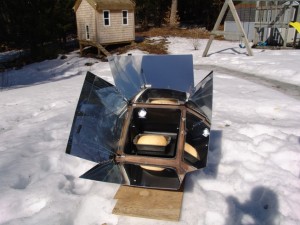 variety of foods. Each participant with get to play with the Global Sun Oven and see just how easy it is to use. This is my favorite new toy, I mean, tool! So much so, that it feels like I’m playing with an easy bake oven!
variety of foods. Each participant with get to play with the Global Sun Oven and see just how easy it is to use. This is my favorite new toy, I mean, tool! So much so, that it feels like I’m playing with an easy bake oven!
The versatility and durability of the Global Sun Oven has made it to be my only recommended Solar Oven to date. There really is no match to it.
Stop by here and see how my very first loaf of freshly milled whole wheat bread in the Global Sun Oven did! It’s the video in the lowest left hand corner. EnJOY!
Have you ever faced the end of a holiday season and had an overflow of foods that are usually not eaten through out the year? We face this after almost each holiday and ti forces me to become creative to avoid wasting food.
Usually, I clean out the refrigerator a little each week, but after a holiday – this required some serious attention. Weekly refrigerator cleaning is key to stretching the grocery dollars.
Although usually my focus is on whole wheat , the truth is that although whole grains are a great base for a healthy and frugal grocery budget, they are not alone on the menu. Learning to make the most of each ingredient, fresh, frozen, or otherwise will help make the most of your groceries and help them to stretch giving you more life for your dollar.
We hope you enjoy the video and subscribe. There are more ideas to prolong the life of your food in the remainder of the series.
 Last week I began my show on choosing, using and storing healthy oils only to discover 3 minutes before the show was to end that my microphone was muted. Needless to say, this is now the topic of the upcoming radio show!
Last week I began my show on choosing, using and storing healthy oils only to discover 3 minutes before the show was to end that my microphone was muted. Needless to say, this is now the topic of the upcoming radio show!
Choosing, storing and using healthy oils is the key to making good choices in your diet. Your health is not only affected by the type of oil you choose, but also how you use it. Over heating can actually turn a good fat into a bad fat (trans fat). Storing oil is also vital to making sure you don’t get sick by using oil that has gone rancid.
Fat and oil have gotten a bad wrap over the years. The truth is that not all fats are created equal. Your brain, your hair, your skin and your arteries need healthy oils and healthy fat to function properly. The key is learning what choices to make and what to stay away from.
I will share with you a bit more information about healthy oils! Some of the topics that will be touched on are:
- What are the smoke points of oils and why is that important information?
- Should you worry about the fat content and type?
- Decipher single chain, Mono-Unsaturated Fatty Acids.
- Is there such a thing as a healthy saturated fat?
- How to spot ‘impostor olive oil’ in the grocery isle.
- What about the spray oils or non-stick sprays?
Stop by our Facebook Page if you have specific questions about this topic and leave a comment/question.
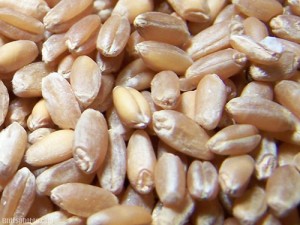 In videos, recipes and general conversation around my home, when we say the words, “whole wheat”, we only mean freshly milled whole wheat.
In videos, recipes and general conversation around my home, when we say the words, “whole wheat”, we only mean freshly milled whole wheat.
When we say flour, we mean freshly milled whole wheat flour.
We just don’t use any other type.
Dead-Whole-Wheat-Bagged-Flour has oxidized as it has sat in the bag. Also the miniscule amount of vitamin E (wheat germ oil) left after the majority of it being stripped from the grain during processing (for shelf life) has begun to go rancid. That is the bitter taste.
We have not used bagged whole wheat flour or bagged enriched white flour for YEARS. However, when sharing recipes, we may often simplify by just saying whole wheat or flour, but we always mean flour that has been freshly milled at home from the whole grain of wheat.
Coming soon is a brief video explanation of WHY we use freshly milled whole wheat flour on our YouTube Channel. Go subscribe to that channel to be more informed!

